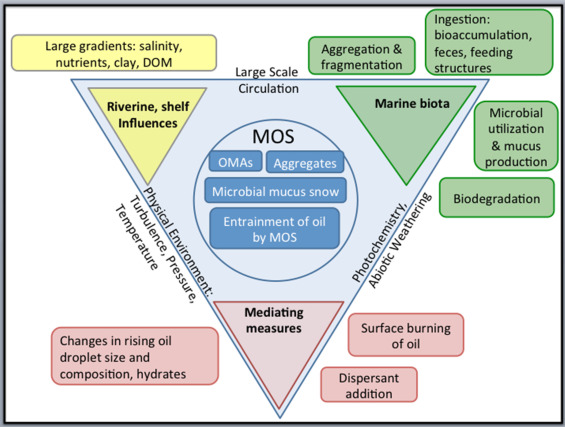
C-IMAGE is a member of the Gulf of Mexico Research Initiative’s working group studying marine oil snow sedimentation & flocculent accumulation, MOSSFA for short. This working group includes researchers from other GoMRI consortia studying various aspects of MOSSFA – formation, sedimentation, impacts on species, modeling, and response and recovery. The MOSSFA working group holds meetings and workshops to synthesize the results throughout the collaborating groups:
What is MOSSFA?
MOSSFA, marine oil snow sedimentation & flocculent accumulation, is an event during oil spills where natural aggregates like marine snow (dying phytoplankton or detritus) combine with oil droplets in the water column and begin to sink. During their descent, these oil aggregates are grazed by zooplankton, degraded by microbes, or finally integrated into sediments.
During the Deepwater Horizon oil spill, an estimated 14% of oil released (111 million liters) was distributed through the MOSSFA process (Daly et al. 2016).
Factors contributing to marine oil snow (MOS) formation include:

Marine biota – including mucus-producing bacteria, biodegradation, and ingestion of sinking aggregates
Oil spill attributes – including addition of dispersants (surface or sub-sea), surface burning, and oil properties (droplet size, hydrates, composition)
River and shelf influences – including freshwater release resulting in changes in salinity, dissolved organic matter (DOM), and nutrient levels, and introduced clays which act as ballasts to aid sinking
Research products are working to model the formation of MOSSFA events based on environmental and response factors during oil spills.
The synthesis of this formation, sedimentation, and modeling data will assist oil spill responders in the event of another large spill.


